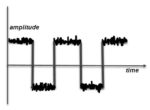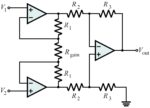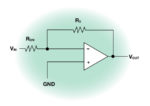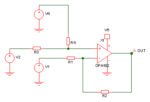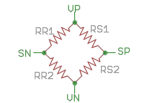Noise in circuits is always going to exist in one way or another. For those working with or designing electronics, noise can ride the working signal and can obscure small signals altogether. Barring any other sources of noise, if very low-level signals are important, you may want to look at your resistors. Resistors are inherently […]
FAQ
What’s the difference between instrumentation and precision amplifiers?
Instrumentation amplifiers (INAs) are precision devices, but they have a particular function and aren’t another type of operational amplifier (op amp). Instrumentation amplifiers are not op amps; you can’t configure them in a multitude of ways, and you only set gain to a chosen value, and only within a specified range. So op amps are […]
Digital filters vs. Analog filters
Digital and analog filters both take out unwanted noise or signal components, but filters work differently in the analog and digital domains. Analog filters will remove everything above or below a chosen cutoff frequency, whereas digital filters can be more precisely programmed. Analog filters that remove signals above a certain frequency are called low pass […]
What is feedback?
Feedback is a term that describes comparing the actual output of a system to the desired output and adjusting the actual output to produce the desired end result. For example, the human nervous system provides constant feedback to the brain, especially when pain is felt for avoiding further bodily harm. In electronics, feedback is defined […]
How much math do you need to know to design electronics?
Education for electronics design tends to have a fair amount of math in it but how much is really required nowadays in order to design electronics? You certainly need some, but a high percentage of what you learn at college or university is likely to be unused once you leave, although this does depend on […]
Interfacing and using bridge sensors
Sensors such as strain gauges, pressure gauges and some magnetic sensors are often bridge devices. They can be full or half bridge although the bridges are usually made of multiple devices connected together, with MEMS sensors being an exception. So, in the case of a strain gauge, a half bridge would be made with one […]
Signal line and supply filtering
There are many reasons for needing to filter power supply or signal line. Power supply lines from a switching regulator may be too noisy for sensitive analog circuitry. Signal or power supply lines may pick up interference either from the rest of the system circuitry or from external devices. With signal lines the problem of […]
Troubleshooting analog circuits
While you may need to troubleshoot a circuit that used to work and now doesn’t, the emphasis here is how to troubleshoot a design when you have your first PCB made. While you may be fortunate and everything works perfectly first time, there is often a need for some troubleshooting with a new design. The […]
When inductors self resonate
Inductors only behave like inductors below because of what’s called their self resonant frequency. And the self resonant frequency arises because the equivalent circuit of real-world inductors isn’t strictly inductive. There are parasitic elements that come into play. To understand why, look at the equivalent circuit for an inductor. An inductor can be comprised of […]
Variable gain amplifiers
It is not uncommon to need an adjustable gain in an analog signal processing chain. If the adjustment is manual then it is pretty straightforward — you can use a potentiometer. When you need the adjustment under digital control then it becomes more complicated. If you need a digitally adjustable instrumentation amplifier then there are […]

